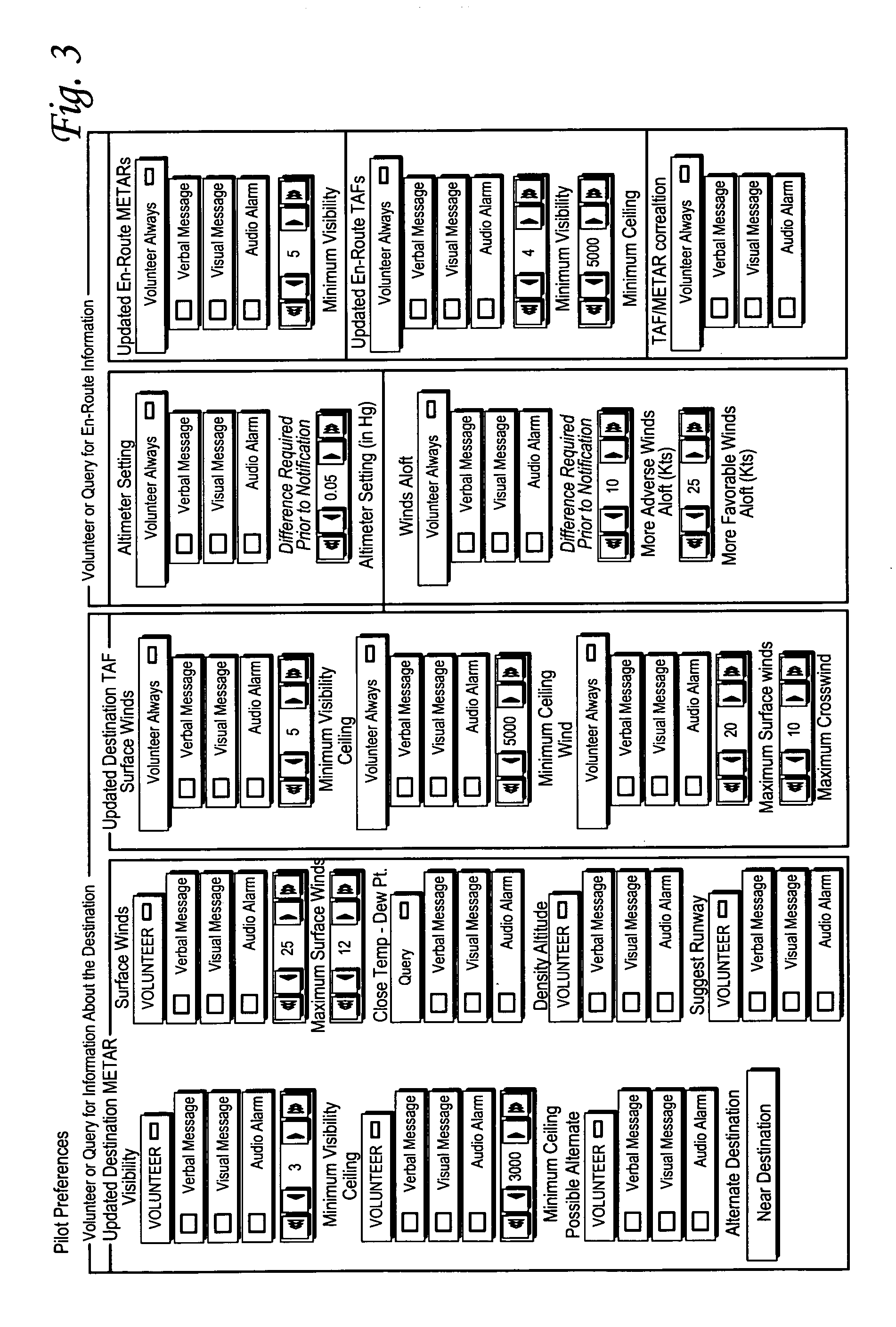Intelligent weather agent
a weather agent and intelligent technology, applied in the field of intelligent weather agents, can solve the problems of loss or lack of weather awareness, large amount of cognitive overload, inability to accurately predict weather,
- Summary
- Abstract
- Description
- Claims
- Application Information
AI Technical Summary
Benefits of technology
Problems solved by technology
Method used
Image
Examples
Embodiment Construction
[0014]FIG. 1 illustrates use of an Aviation Weather Environment (AWE) system according to an embodiment of the invention. A pilot 11 in an aircraft 12 is enroute between a source (airport, etc.) 13 and an expected destination 14. Preferably, the pilot 11 has entered flight route parameters specifying part of, or all of, a flight route the pilot expects to follow on this flight, including an estimated time at which the pilot expects to depart from the source airport and predicted cruise air speed enroute.
[0015]The aircraft 12 carries a system 21, illustrated in FIG. 2, that includes an array 22, having at least two antennas, 23A and 23B, that senses or otherwise provides the present value, including any available update value(s) and / or any predicted value(s), for one or more of the following situation parameters: trip length TL, present trip phase TP, trip departure time, distance Δs(dest) of present location to a selected aircraft destination, visibility VIS, cloud cover and ceiling...
PUM
 Login to View More
Login to View More Abstract
Description
Claims
Application Information
 Login to View More
Login to View More - R&D
- Intellectual Property
- Life Sciences
- Materials
- Tech Scout
- Unparalleled Data Quality
- Higher Quality Content
- 60% Fewer Hallucinations
Browse by: Latest US Patents, China's latest patents, Technical Efficacy Thesaurus, Application Domain, Technology Topic, Popular Technical Reports.
© 2025 PatSnap. All rights reserved.Legal|Privacy policy|Modern Slavery Act Transparency Statement|Sitemap|About US| Contact US: help@patsnap.com



